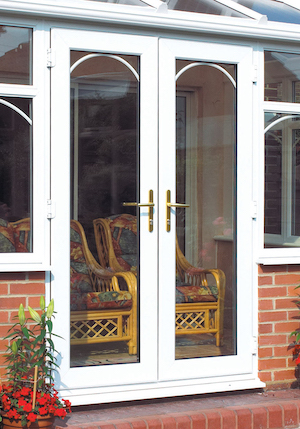See What French Door Adjustment Tricks The Celebs Are Utilizing
페이지 정보

본문
A Comprehensive Guide to French Door Adjustment: Ensuring Functionality and Aesthetic Appeal
French doors have long been a precious option for property owners looking for elegance and functionality for their home. Identified by their large panes of glass and the ability to open completely, French doors can change a room by welcoming natural light and creating a smooth connection between indoor and outside environments. Nevertheless, like any other door, they might require adjustments with time to keep their optimal performance. This post will explore the nuances of French door adjustment, checking out why modifications are needed, how to perform them, and answering common concerns on the topic.
Comprehending French Door Mechanics
French doors usually include 2 panels that swing open from the center. They might have various locking mechanisms, hinges, and frame configurations, which all contribute in their overall performance. Here are some common components involved:
- Hinges: These are important for swinging the door open and closed, and they must be effectively aligned to make sure smooth movement.
- Locks and Latches: Mismatched locks can result in security issues and affect performance.
- Threshold: The bottom part of the door frame can end up being uneven, causing gaps and drafts.
Why French Door Adjustment is Necessary
Over time, French doors can experience misalignment due to:
- Settling of your house: Homes naturally settle, triggering frame modifications which can misalign doors.
- Humidity and Temperature Changes: Wood doors can swell or shrink with humidity and temperature level variations.
- Wear and Tear: Regular usage gradually can result in loose hinges or irregular limits.
Appropriate adjustment of French doors is important to maintain not just their visual appeal but likewise their functionality.
How to Adjust French Doors
Changing French doors includes several actions and might vary somewhat depending on the specific configuration. Nevertheless, the following general procedure applies widely to most French door setups.
Step-by-Step Adjustment
- Examination: Begin by inspecting the hinges, frame, and threshold for visible gaps or misalignments.
- Gather Tools: You will need:
- Screwdriver
- Level
- Shims (if required)
- Allen wrench (if hinges are adjustable)
- Adjust the Hinges:
- Loosen the screws on the hinges a little.
- Using an Allen wrench, change the hinge screws (if suitable) to raise or reduce the door panel until it aligns correctly.
- Tighten the screws back after adjustment.
- Check the Alignment: Use a level along the door's edge to guarantee it stands directly. Adjust as required.
- Change the Threshold: If spaces persist at the bottom, use shims under the limit or change it according to maker guidelines.
- Check the Locking Mechanism: Ensure that the doors lock firmly into place without requiring them.
- Final Inspection: Check for any draft or misalignment after changes and right if required.
Maintenance Tips
- Regularly examine hinges and locks for wear and tear.
- Clean hinges with a lubricant to decrease friction.
- Examine weather condition removing and change it if it shows significant indications of wear.
When to Seek Professional Help
While lots of homeowners can attend to minor modifications independently, some circumstances call for professional consultation:
- Complex issues associated with structural problems within your home.
- Severe misalignment triggered by extended wear, requiring replacement of hinges.
- Issues with lock systems that require specialized tools and proficiency.
Common FAQs About French Door Adjustments
1. How often must I change my French doors?Adjustments need to
be made as required. A seasonal check is advised to ensure optimal functionality, specifically after significant weather condition changes. 2. What tools do I require for adjustment?Basic tools consist of
a screwdriver, level, Allen wrench, and shims for
supporting unequal thresholds. 3. Why is my French door sticking?Sticking might arise from humidity triggering the door to swell or from
misaligned hinges. Check for grooves and change as needed. 4. Can I change French doors myself?Yes, with basic tools and a little knowledge of the elements, most homeowners can handle simple changes.

5. What if my French doors will not close properly?This can indicate serious misalignment or damaged hardware. Evaluate the circumstance and consider professional help if it can not be resolved with easy changes. French doors can substantially boost the aesthetic and practical qualities of a home. Though they may need occasional modifications due to different factors such as settling, humidity, and regular use, a few simple steps can
restore their efficiency. Regular assessments and proactive maintenance can extend the life expectancy of French doors, enabling property owners to enjoy their appeal and energy for many years to come. Ultimately, a well-adjusted set of French doors not just serves useful purposes however also contributes to the overall elegance of any area. Summary Table: Key Points for French Door Adjustment Element Description Parts Hinges, locks, locks, threshold Common Issues Misalignment, sticking, gaps Tools Needed Screwdriver, level, Allen wrench, shims Adjustment Steps Examine, adjust
hinges, check alignment Maintenance Tips Regular cleanup,
check for wear, change sealsWhen to SeekHelp Complex issues or structural issues With thisknowledge at hand, homeowners can guarantee their French doors stay notsimply practical, however likewise a gorgeous feature of their home.
- 이전글It's The Complete Cheat Sheet For How Do I Get A Replacement Car Key 25.07.19
- 다음글10 Things That Your Family Taught You About Custom Cat Flap Installation 25.07.19
댓글목록
등록된 댓글이 없습니다.
